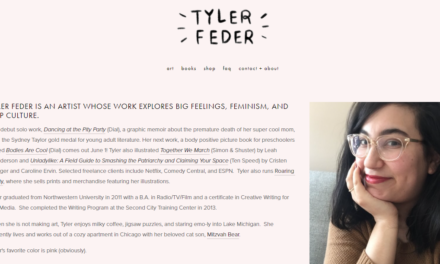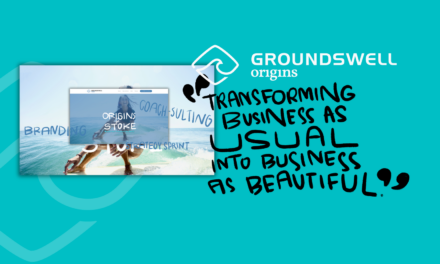Company: Hearst Magazines
Hearst Magazines, a unit of Hearst Corp., is a U.S.-based publisher of monthly magazines. With 20 U.S. titles and more than 300 international editions, Hearst is known for popular titles such as O, The Oprah Magazine, Esquire, and Popular Mechanics. Hearst Magazines Digital Media, which is responsible for creating and implementing Hearst Magazines’ digital strategy, has more than 28 websites and 14 mobile sites for brands such as Cosmopolitan, ELLE, ELLE DECOR, Esquire, Good Housekeeping, Marie Claire, Popular Mechanics, and Seventeen, as well as digital-only sites such as Delish.com and RealBeauty.com.
www.hearst.com
Business Challenge
These days, having a good digital strategy has become a business staple for successful publishers. Hearst Magazines has not shied away from this challenge, making it a priority to keep up with its technology-driven readership by creating both websites and mobile sites for its brands and their content. But even with all of its efforts, Hearst realized it needed to find a publishing solution that would not only provide a more efficient way to publish content to multiple venues, but would also streamline its workflow process.
Vendor of Choice: Aysling and WoodWing
Founded in 2000, WoodWing develops multichannel publishing software, which allows its clients to publish static, dynamic, and interactive content to print, web, social media, mobile, and tablets. Its publishing system, Enterprise, which also includes the content management application Content Station, enables publishers to post content to any channel at any time. WoodWing currently serves hundreds of customers, including The Japan Times; American Express Publishing Corp.; Time, Inc.; and Conde Nast USA. Aysling Digital Media Solutions is a WoodWing Gold Authorized Solution Partner and Adobe Partner that provides digital publishing solutions, including media production and graphic design and integration and support for publishers, corporations, and agencies.
www.woodwing.com; www.aysling.com
The Problem in Depth
In a time of interactive e-readers, touch-screen tablets, and the “anytime, anywhere” attitude that accompanies smartphones, the printed page just doesn’t seem so exciting anymore. Sure, there are plenty of us who still love the tactile experience of physically turning a page, but there are also readers who prefer their information to be pixelated and delivered wirelessly. This isn’t necessarily news to publishers, but the struggle to please both camps of readers is still a major issue.
With more than a century in the publishing business, Hearst Magazines has found success by adapting to cultural (and technological) shifts, including but not limited to embracing the digital revolution. Though it was already heavily invested in creating a strong digital presence, Hearst Magazines wanted to start developing digital versions of its magazines, and it knew that the workflow process could be easier. As Sean Keefe, director of publishing technology at Hearst Magazines, explained, in 2010 Hearst was “starting to create digital editions of our magazines and we were looking for a solution to help streamline the process for creating content for both print and digital and to give our designers the right tools to enhance their digital editions.”
Additionally, Hearst was looking to upgrade its Adobe suite from CS3 to CS5 and found it could not do so without either upgrading K4 or moving to a different vendor. “Through discussions with both WoodWing and Aysling, we decided to test WoodWing as a possible K4 alternative,” says Keefe. In 2012, that test turned into a full-blown implementation of WoodWing’s Enterprise solution.
The Solution
“We began discussions with Hearst some months after we started our tablet publishing in early 2010. The technology Hearst Magazines had in place was purely print-centric. As Hearst aims to align each brand for the mobile markets while continuing to support the print editions, it needed flexible technology to address multichannel publishing,” says Shawn Duffy, managing director of WoodWing United States of America.
To achieve its goals, Hearst adopted WoodWing’s multipublishing solution, Enterprise. Enterprise acts as the backbone of the publishing process, functioning behind the scenes of a project. WoodWing’s Content Station, an application that sits on top of the Enterprise solution, allows content producers to create, edit, manage, and publish all types of files regardless of their destined output. A WoodWing user doesn’t have to toggle between multiple programs when she needs to publish an article to both an iPad edition of a magazine and a print one.
Additional features found in WoodWing’s Content Station include a Planning tool, which shows writers and editors every brand in the system and when its scheduled output will take place. When used together, Enterprise and Content Station let writers, editors, and other content producers work with files from a variety of applications, such as Adobe InDesign, InCopy, Microsoft Word, and Photoshop and Illustrator and publish them to their desired channel, whether that is a digital or print version of a magazine. Because Content Station and Enterprise work in tandem, editors and content publishers can browse, search, and import content from other repositories or digital asset management systems without leaving the Content Station interface.
Enterprise’s ease of use greatly influenced Hearst’s decision to engage in a full implementation. As Keefe says, “We felt that WoodWing provided us with the right set of tools to not only improve our print editorial workflows but also help to facilitate the creation of both print and digital editions of our brands. WoodWing’s willingness to engage directly with us and insert our ideas and feature requests into their roadmap also played a role in our choosing them.”
According to WoodWing’s Duffy, this flexibility is what solidified WoodWing’s partnership with Hearst. “Enterprise was selected by its open architecture and its versatility to help Hearst Magazines to move to a more flexible publishing approach,” explains Duffy.
The Outcome
Currently, Esquire and Popular Mechanics are among the titles being produced by Hearst Magazines using WoodWing’s multichannel publishing system. Only time will tell how many more of Hearst’s brands will be published via WoodWing’s solution, but it is clear that the tools are exactly what Hearst needed to reach its print and digital goals. “Enterprise provided us with the right solution for managing our workflows. The WoodWing digital publishing tools allow our designers to create interactivity for our digital editions right in InDesign. Enterprise also helps to streamline and create simultaneous workflow for our print and digital editions,” explains Keefe.
Though both Duffy and Keefe acknowledge there were some challenges during the implementation phase, these issues were small and were solved quickly. “Aside from minimal issues with users transitioning from K4 to Enterprise, there were very few problems with the implementation,” says Keefe. Duffy adds, “With an implementation that size and complexity, you always run into some kind of trouble, but these were not difficult tasks.”
The relationship between WoodWing and Hearst Magazines is one of mutual adoration and respect. “I would say this has been an extremely positive collaborative experience. WoodWing has shown to be willing to work directly with my team and has been receptive to all feedback and feature change requests that we have made,” says Keefe. According to Duffy, open communication and willingness to collaborate are crucial to the partnership’s success. “Hearst has become a very close partner and has a direct dialog with our product managers to provide feedback and also development ideas,” says Duffy. “It’s a fruitful relationship.”






